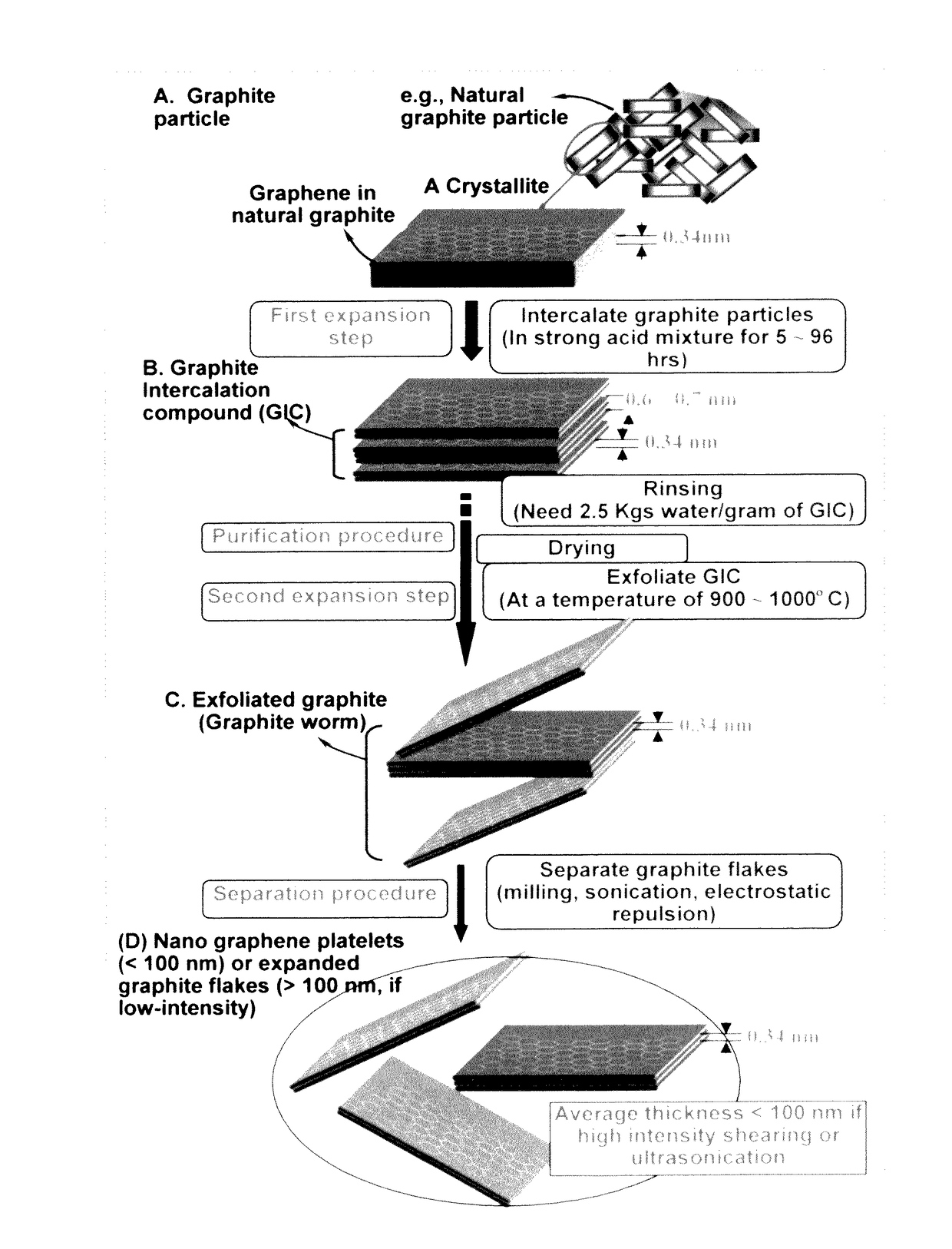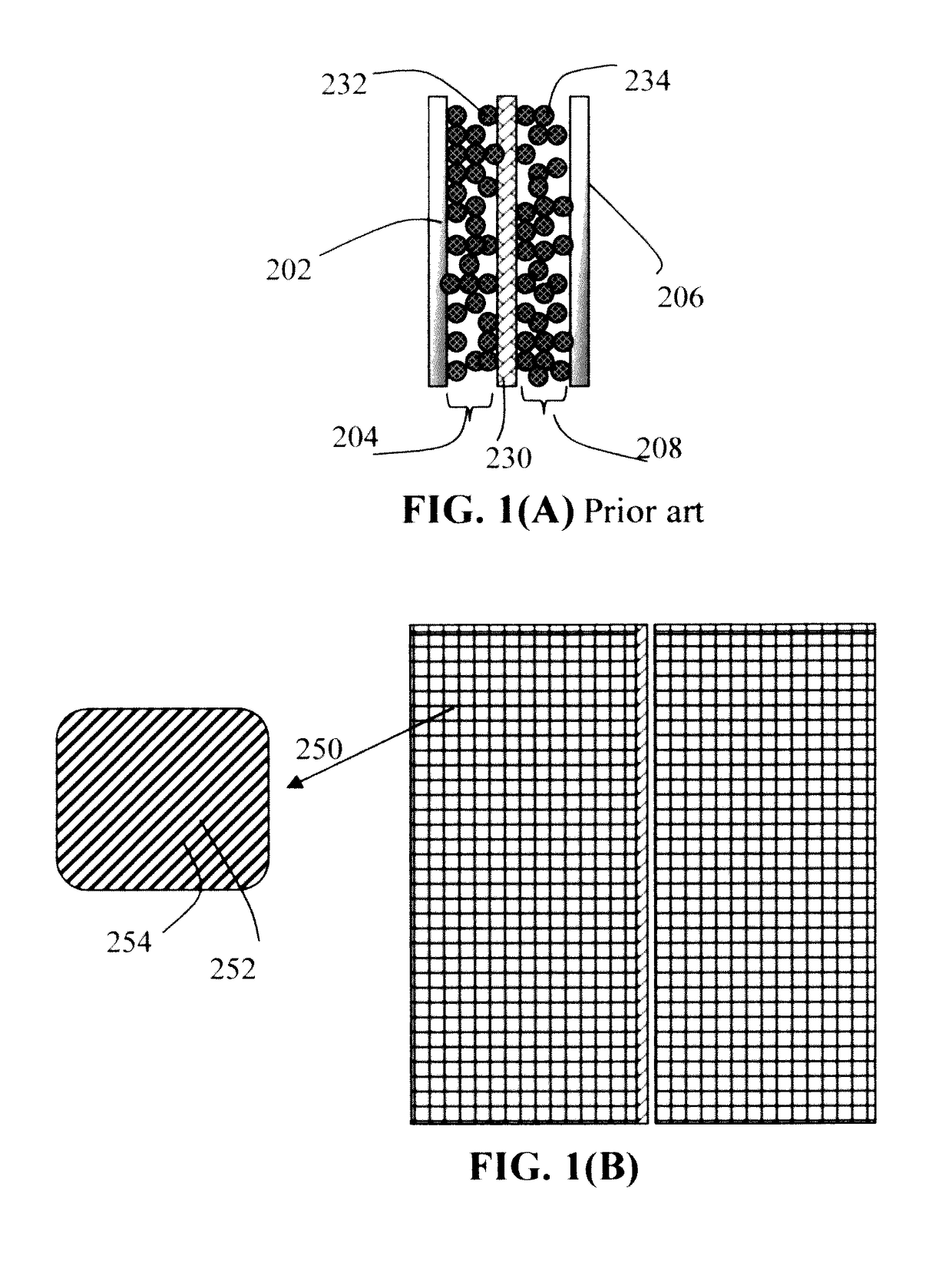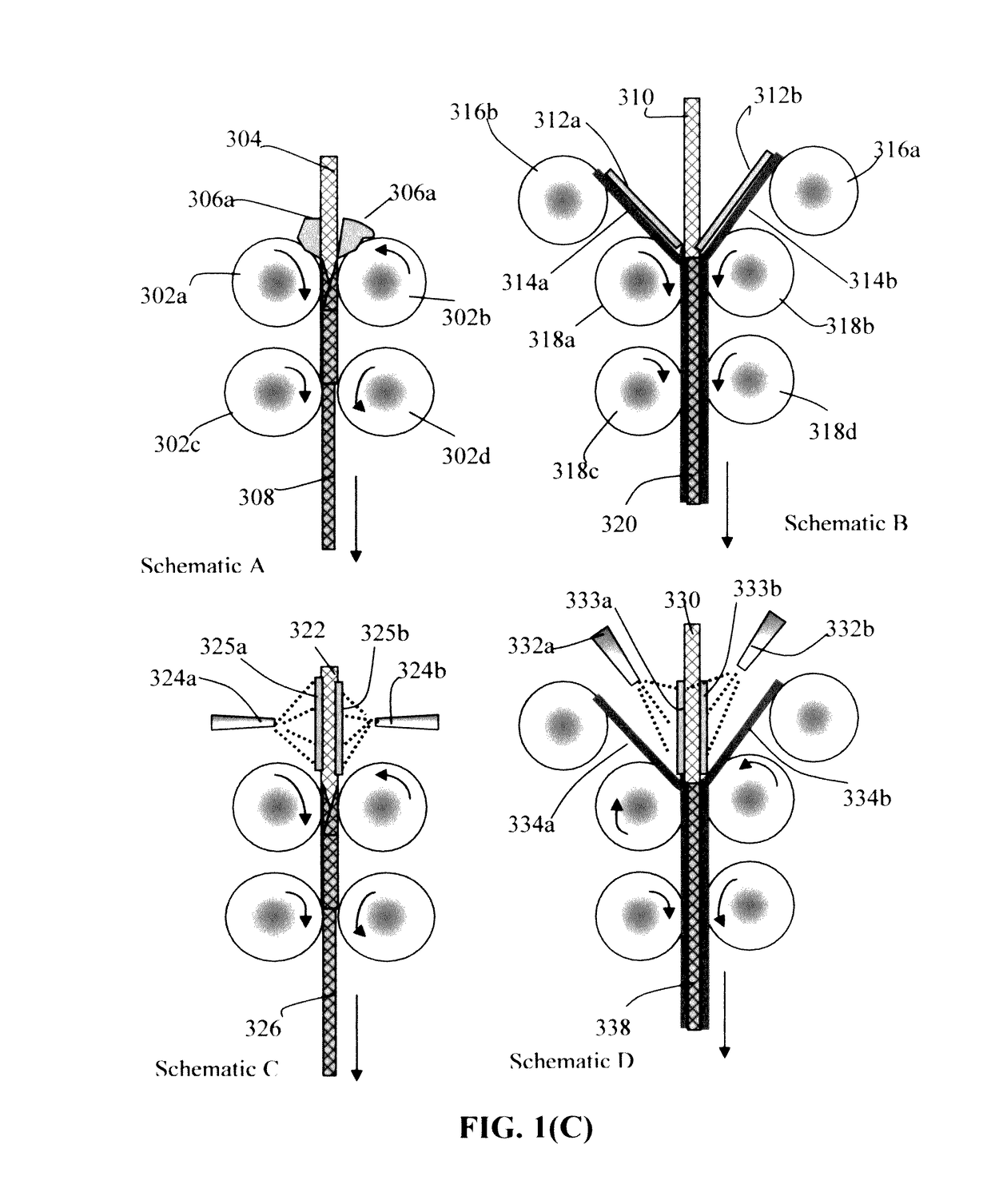Continuous process for producing electrodes for supercapacitors having high energy densities
a supercapacitor and energy density technology, applied in the direction of reduction-oxidation hybrid capacitors, electric vehicles, transportation and packaging, etc., can solve the problems of low actual massloading of electrodes and apparent densities of active materials, poor structural integrity, and inability to provide high-capacity energy storage devices at the supercapacitor cell or pack level, etc., to achieve low overhead (ancillary component) weight and volume, high active material mass loading, and high volumetric capac a supercapacitor cell and supercapacitor cell and supercapacit supercapacitor cell technology, applied in the production process, which is applied in the field of supercapacitor cell and supercapacitor cell cell cell cell cell cell cell cell cell cell cell cell cell cell cell cell cell cell cell cell cell cell cell cell cell cell cell cell cell
- Summary
- Abstract
- Description
- Claims
- Application Information
AI Technical Summary
Benefits of technology
Problems solved by technology
Method used
Image
Examples
example 1
Graphene from Carbon / Graphite Fibers
[0149]Continuous graphite fiber yarns were cut into segments of 5 mm long and then ball-milled for 48 hours. Approximately 20 grams of these milled fibers were immersed in a mixture of 2 L of formic acid and 0.1 L of hydrogen peroxide at 45° C. for 60 hours. Following the chemical oxidation intercalation treatment, the resulting intercalated fibers were washed with water and dried. The resulting product is a formic acid-intercalated graphite fiber material containing graphite oxide crystallites.
[0150]Subsequently, approximately ½ of the intercalated or oxidized fiber sample was transferred to a furnace pre-set at a temperature of 1,000° C. for 30 seconds. The compound was found to induce extremely rapid and high expansions of graphite crystallites. Approximately half of the as-exfoliated graphite fibers were subjected to de-oxygenation at 1,100° C. for 20 minutes in a nitrogen atmosphere to obtain reduced exfoliated graphite. A small amount each o...
example 2
Preparation of Graphene Oxide (GO) and Reduced Graphene Oxide (RGO) Nano Sheets from Natural Graphite Powder
[0154]Natural graphite from Huadong Graphite Co. (Qingdao, China) was used as the starting material. GO was obtained by following the well-known modified Hummers method, which involved two oxidation stages. In a typical procedure, the first oxidation was achieved in the following conditions: 1100 mg of graphite was placed in a 1000 mL boiling flask. Then, 20 g of K2S2O8, 20 g of P2O5, and 400 mL of a concentrated aqueous solution of H2SO4 (96%) were added in the flask. The mixture was heated under reflux for 6 hours and then let without disturbing for 20 hours at room temperature. Oxidized graphite was filtered and rinsed with abundant distilled water until neutral pH. A wet cake-like material was recovered at the end of this first oxidation.
[0155]For the second oxidation process, the previously collected wet cake was placed in a boiling flask that contains 69 mL of a concentr...
example 3
Preparation of Single-Layer Graphene Sheets from Meso-Carbon Micro-Beads (MCMBs)
[0159]Meso-carbon microbeads (MCMBs) were supplied from China Steel Chemical Co., Kaohsiung, Taiwan. This material has a density of about 2.24 g / cm3 with a median particle size of about 16 μm. MCMB (10 grams) were intercalated with an acid solution (sulfuric acid, nitric acid, and potassium permanganate at a ratio of 4:1:0.05) for 48-96 hours. Upon completion of the reaction, the mixture was poured into deionized water and filtered. The intercalated MCMBs were repeatedly washed in a 5% solution of HCl to remove most of the sulphate ions. The sample was then washed repeatedly with deionized water until the pH of the filtrate was no less than 4.5. The slurry was then subjected ultrasonication for 10-100 minutes to produce GO suspensions. TEM and atomic force microscopic studies indicate that most of the GO sheets were single-layer graphene when the oxidation treatment exceeded 72 hours, and 2- or 3-layer g...
PUM
| Property | Measurement | Unit |
|---|---|---|
| thickness | aaaaa | aaaaa |
| thickness | aaaaa | aaaaa |
| thickness | aaaaa | aaaaa |
Abstract
Description
Claims
Application Information
 Login to View More
Login to View More - R&D
- Intellectual Property
- Life Sciences
- Materials
- Tech Scout
- Unparalleled Data Quality
- Higher Quality Content
- 60% Fewer Hallucinations
Browse by: Latest US Patents, China's latest patents, Technical Efficacy Thesaurus, Application Domain, Technology Topic, Popular Technical Reports.
© 2025 PatSnap. All rights reserved.Legal|Privacy policy|Modern Slavery Act Transparency Statement|Sitemap|About US| Contact US: help@patsnap.com



